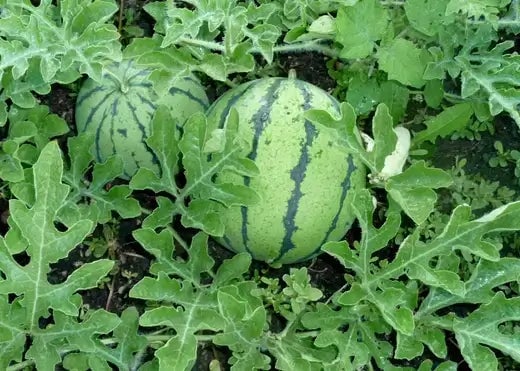If you’re a watermelon fan and an avid gardener, you should try growing a watermelon patch.
Many gardeners do not grow a watermelon patch because it takes up a lot of yard space, but if you have some extra time and a broader landscape, it may be just the thing for you.
You should note that a watermelon patch should be grown in an enclosed area and away from the front yard since you don’t want thieves, both human and animal, messing with your watermelon garden.
A watermelon patch also needs plenty of space, so be sure to make plenty of room in your garden. As with any vegetable or fruit, the soil should contain the proper ingredients: nitrogen, potassium, and phosphorus. Check with your local nursery for the exact proportion of necessary ingredients for growing a healthy watermelon patch.
It will be your choice whether or not you want to buy a melon starter plant from your local nursery or to grow your melons from the ground up with seeds—place them in an area that will get at least six hours of sunlight daily. Leave the soil for around 2-3 days and sprinkle mulch around the soil bed to prevent weeds from intruding and choking your melon patch.
Mulch is also a good thing to use because it traps heat and retains moisture for your plants. Make sure to plant in soil that is at least 65 degrees in temperature. Watermelons thrive in warmer climates, so be sure to get started after winter has passed, preferably early spring, so your melons will get plenty of sunshine throughout the spring and summer.
Pull back any mulch and place the seeds a couple of inches in the ground. If using a starter plant, then separate at least two inches apart from one another. Use discretion in dividing watermelon plants as they grow; you want them to get plenty of room. Water every three days, but do not overwater since your melon patch requires little water. Since each melon stores the right amount of water inside the meat, you do not need water. While your melons are growing, look for weeds and pests.
For weed treatment, use organic pesticides when treating or preventing weed infestation. Natural weed killer is always a good alternative since you do not want harmful chemicals on your plants. Observe tiny insects and fungal growth. Watermelons are fresh for harvesting in a month. To test for full ripening, knock on a melon, and if a dull sound echoes back, they are ready to be pulled from the garden.
If you notice any signs of wilting, be sure to water extra. Prune your plants regularly to maintain proper shape, preventing melon plants from crossing each other’s path. Because melons grow lush with leaves and vines, it is always essential to maintain a clean melon patch as your plants are growing.
Source of Information on Growing your Watermelon Patch
Read more

Filled with some vitamins and minerals, blackberries provide a delicious treat eaten raw or incorporated into a wide selection of recipes. Blackberries contain vitamins A, C, and E and select B vit...

Lonicera japonica, Halls Honeysuckle VineThere are mainly two types of Halls honeysuckle; the first is known as the climbers and the second one as shrubby honeysuckles. Both of these plants need di...


